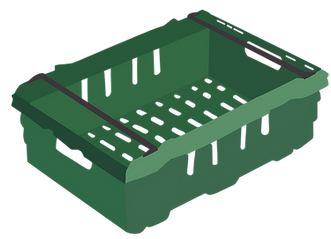
Are my apples Ready?
Apples can be ready any time from August to late October and often we are still receiving apples into December. Different apple varieties will be ready at different times but if you don’t know your variety there are still sure ways to determine when to pick.
Test Pick My Apples
_edited.png)
When picking your fruit we recommend holding it at the base and twisting the fruit in one direction, if its ready it will part from the branch with ease. If you find you need to pull and it will not release without a deal of force or part of the branch breaks off with it, this may indicate your fruit is not ready.
Check the pips
_edited.png)
This apple is juvenile, cutting it open has revealed there are no pips formed yet. This apple is not ready.
_edited.png)
This apple has white pips. It’s in early stages, the seeds have formed but it will be starchy to the taste or even sour, as the apple grows it will convert these starches to sugars.
_edited.png)
_edited.png)
The pips are a light brown. The fruit is nearing being ready it may still have a sharp after taste. They can be removed from the tree easier, but it doesn’t feel effortless.
The pips are a dark chestnut brown and the starches have been converted into sugar. It will come away from the tree freely when turned, it's ready.
Bulk Picking

If you find you have lots of apples on one tree or if parts of the tree are difficult to reach you may find this guide helpful
You will need:
Tarpaulin, Blankets, or Sheets
Optional:
Pole Picker, Panking pole

We find one of the most efficient ways to bulk pick is to vigorously shake the tree onto a tarp. This will remove the bulk of the apples we recommend always wearing a safety helmet when shaking trees as apples are likely to hit you on their decent.

Always shake your tree holding on to a firm large branch. We do not recommend shaking vigorously from the end of the branch as this can cause branches to break of which may lead to rot in the long term. Shake with two hands around the branch in a forward and back motion.


You may find there are still hard to reach apples left on the tree. We recommend a fruit picker, these can be up to 3 meters in length. Grab the apple around the stalk and twist the apple until it falls into the bag. You may also use a stick to assist with shaking harder to reach branches we call these panking poles.

Once all the apples are on the tarp, it's time to collect and check . Remove any leaves and apples with rot, bird damage and windfalls. Apples from your tree may look different to what you see in the supermarket, in stores they only use the higest grades of apples. They do not need to be perfect for juice

_edited.png)

_edited.png)
Apples come in all shapes, sizes, and sizes. You may find that some of your apples are unusual shapes, have odd markings or only have one side that has seen the sun. All these apples are perfectly fine for making cider and juice. We recommend you remove ones that may be rotten or eaten by animals, but here at apple cottage we celebrate all apples big, small, and different.
Apples are as unique as us!
.png)
We suggest that 8 supermarket style crates or 120 kg of apples will produce approximately 100, 750ml bottles of juice.

